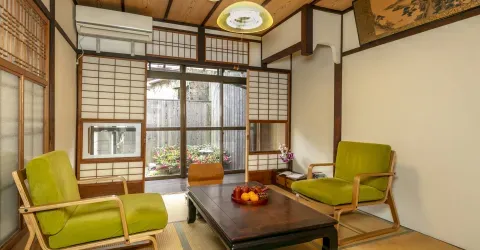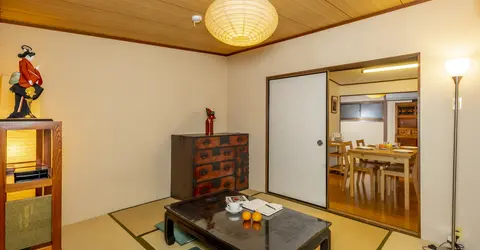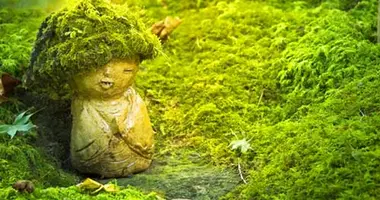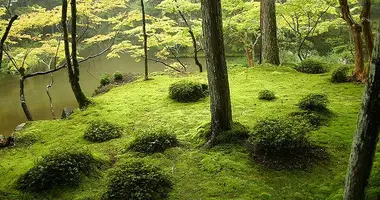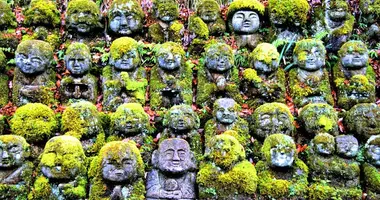Sugawarain Tenmangu Shrine
- Published on : 15/02/2017
- by : Japan Experience
- Youtube
- History of Sugawarain Tenmangu Shrine
- Sugawarain Tenmangu Shrine Access
- Nearby Sugawarain Tenmangu Shrine
- Japan Temples & Shrines
Sugawarain Tenmangu Shrine 菅原院天満宮神社
Sugawarain Tenmangu Shrine is a small Shinto Shrine flanking, and near the south west corner of, Kyoto Imperial Palace (Gosho) in Kyoto city.

Sugawarain Tenmangu Shrine, Kyoto

Ema votive plaques featuring Sugawara Michizane, Sugawarain Tenmangu Shrine, Kyoto
History of Sugawarain Tenmangu Shrine
There are around 12,000 Tenmangu shrines in Japan dedicated to Michizane Sugawara (845-903), Japan's patron of learning. In Kyoto the most famous is Kitano Tenmangu Shrine, visited daily by bus loads of junior high and high school students coming to pray for success in exams, and host to the large Tenjin-san flea market on the 25th of each month.
Michizane Sugawara was a famed Heian Period noble, scholar, politician and poet. He served the Heian court in a number of important positions before the death of Emperor Uda, his protector. Following a power struggle with the powerful Fujiwara clan, Sugawara was then demoted and exiled to a lowly post in Dazaifu, Fukuoka Prefecture, where he died.
Legend has it that plague and misfortune then struck the capital in Kyoto, so to placate the angry spirit of Sugawara, the authorities restored his titles and built Kitano Tenmangu Shrine to honor him.
An ox statue stands in most Tenmangu shrines and relates to the story of the ox cart carrying Sugawara's body back to Kyoto. The oxen refused to be moved from a certain spot and so Sugawara was buried in what is now Dazaifu Tenmangu.

Sugawarain Tenmangu Shrine, Kyoto

Sugawarain Tenmangu Shrine and St. Agnes Church, Kyoto
Sugawarain Tenmangu is believed to be the spot where the family residence of the Sugawara once stood, and was home to his great grandfather Furuhito Ason (Ason is an hereditary title), grandfather Kiyokimi, father Koreyoshi and himself. A family of court nobles, governors and imperial officials, many of the Sugawara were also noted poets and scholars of their age.
Michizane is believed to have been born here and to have received his first bath from the well on the shrine's grounds. A stone lantern in the grounds is also said to date from his time.
In the 9th century, the land became a temple, Kankikoji, which later moved, leaving only the temple's Shinto shrine to commemorate the birthplace of the great man and his family.

Bull statue, Sugawarain Tenmangu Shrine, Kyoto
Sugawarain Tenmangu Shrine is one of 25 shrines on a pilgrimage dedicated to Michizane. The shrine's annual festival is on 25th July.
As the shrine stands next to St. Agnes Church, the site is one of those rare places in Japan where it is possible to photograph a Christian church and Shinto shrine in the same shot.
Sugawarain Tenmangu Shrine
408 Karasumadori, Shimodachiuris-agaru
Horimatsu-cho, Kamigyo-ku
Kyoto 602-8021
Tel: 075 211 4769
Hours: October-March 7 am-6 pm; April-October 7 am-7 pm
Admission: Free.
Sugawarain Tenmangu Shrine Access - How to get to Sugawarain Tenmangu Shrine
From Kyoto Station take the Kyoto Subway Karasuma Line to Marutamachi Station (Exit 2) and walk a couple of hundred meters north past Daimaru Villa.
Kyoto bus #51 for Ritsumeikan University from Sanjo Keihan Station goes past Sugawarain Tenmangu Shrine. Get off at the Karasuma Marutamachi or Karasuma Shimodachiuri stop.

Karasuma Dori near Sugawarain Tenmangu Shrine, Kyoto
Nearby Sugawarain Tenmangu Shrine
Sugawarain Tenmangu Shrine is located next to St. Agnes Church, and a little south of The Palace Side Hotel and Go'o Shrine. The shrine is 250 m north of the south-west corner of Kyoto Imperial Palace (Gosho).
Map
Books on Kyoto Japan
Sugawarain Tenmangu Shrine in Kyoto near the south west corner of the Gosho is believed to be the birthplace and home of Michizane Sugawara, the noted Heian era poet and court official.
